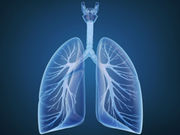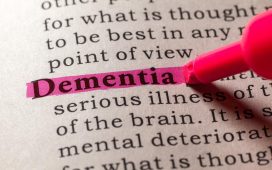Slower annual rates of decline in FEV1 and FVC for those in highest quartile of anthocyanin intake
MONDAY, May 21, 2018 (HealthDay News) — Anthocyanin intake is associated with slower decline in lung function, according to a study presented at the American Thoracic Society’s 2018 International Conference, held from May 18 to 23 in San Diego.
Vanessa Garcia-Larsen, Ph.D., from the Johns Hopkins Bloomberg School of Public Health in Baltimore, and colleagues examined the correlation between dietary intake of anthocyanin and lung function decline in 463 adults from two cohorts from England and Norway. The effect of anthocyanin intake was examined on forced vital capacity (FVC), forced expiratory volume in one second (FEV1), and the ratio of FEV1/FVC.
The researchers found that the adjusted mean annual change was −18.9 mL/year and −22.2 mL/year for FEV1 and FVC, respectively, for individuals with the lowest quartile of anthocyanin intake. Slower annual rates of decline were seen in FEV1 and FVC for participants with the highest quartile of anthocyanin intake (−9.8 mL/year for both). The FEV1/FVC ratio decline was also slower for the highest versus the lowest quartile of anthocyanin intake (−0.02/year). In association with increased anthocyanin intake, significantly slower rates of decline in the FEV1/FVC ratio were seen for never smokers and those who had quit.
“Our study suggests that the general population could benefit from consuming more fruits rich in these flavonoids like berries, particularly those who have given up smoking or have never smoked,” Garcia-Larsen said in a statement.
Copyright © 2018 HealthDay. All rights reserved.








